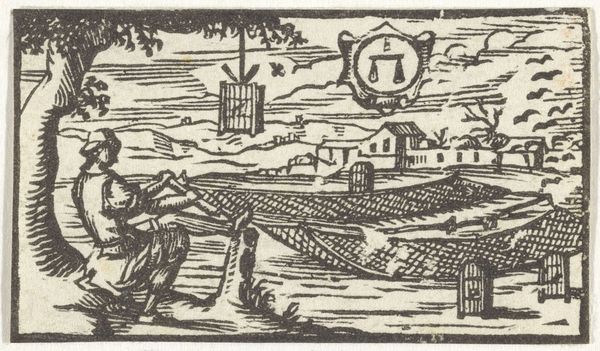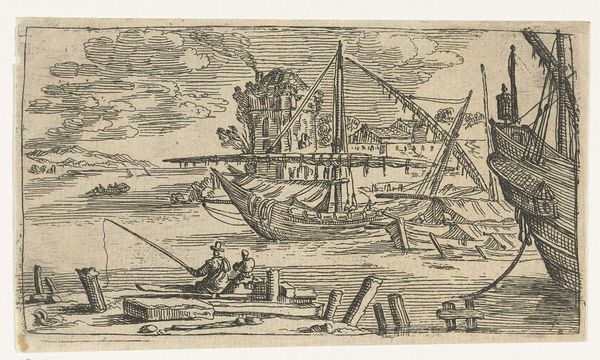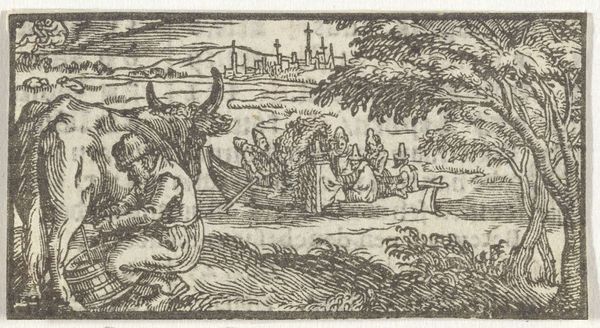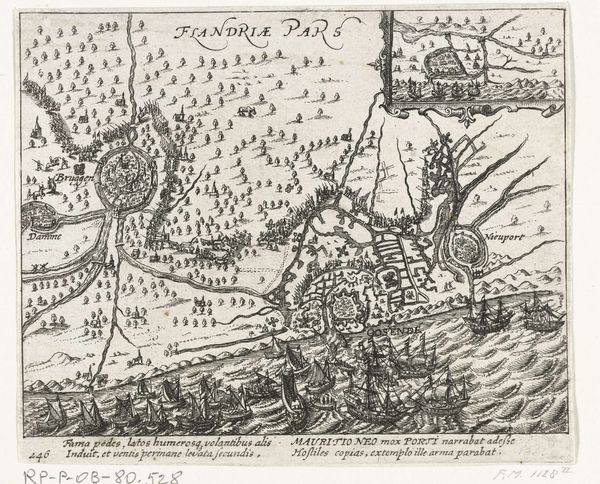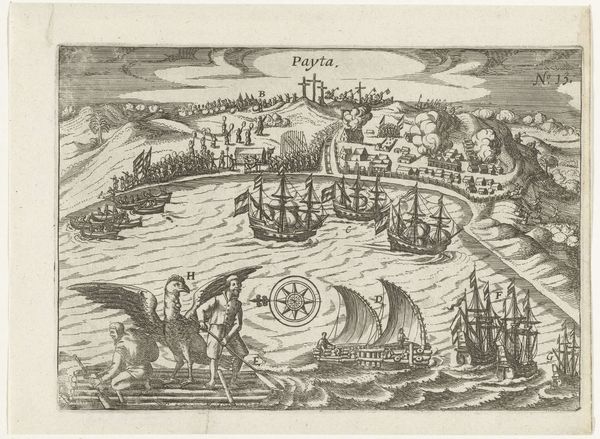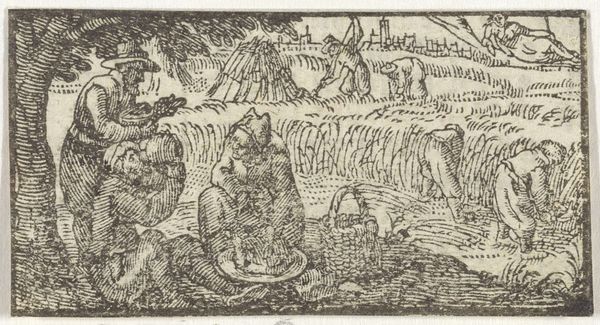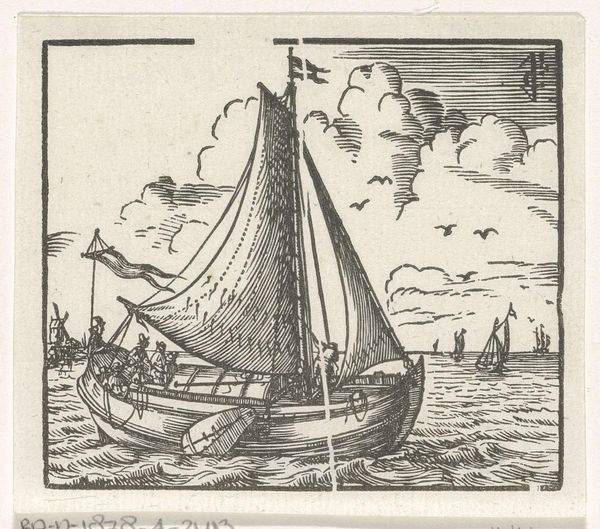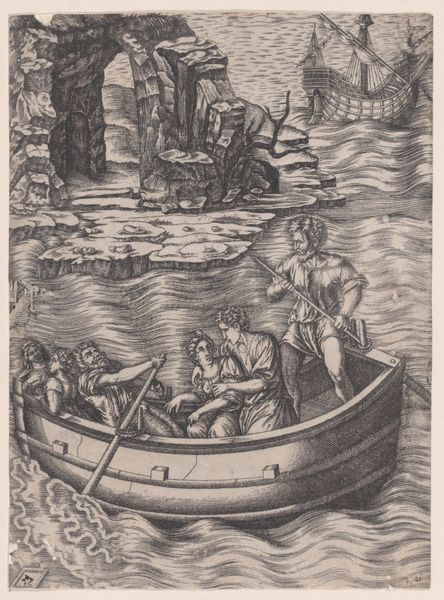
print, woodcut, engraving
#
baroque
# print
#
landscape
#
woodcut
#
genre-painting
#
engraving
Dimensions: height 31 mm, width 54 mm
Copyright: Rijks Museum: Open Domain
Editor: So, this is "Juni," a 17th-century engraving and woodcut. It has this folk-art feel, depicting people in a boat heading towards a cityscape. What catches your eye in terms of its historical context? Curator: The boat itself becomes a fascinating symbol. Water travel, particularly in 17th century, was tied to both opportunity and oppression, a key artery for trade, colonialism, and forced migration. Editor: Oppression, really? Curator: Absolutely. This small vessel becomes a microcosm of broader social dynamics. We can read the passengers, their apparent class and gender presentations as markers within an emerging global economy fueled by inequity. Do you notice anything about how space is allocated? Editor: Well, one figure is separated from the group, set further back... Curator: Exactly. Isolation. Who is permitted leisure and mobility versus who remains unseen or restricted is a powerful commentary. Consider also the presence of the coat-of-arms on top left... who does that represent? Editor: An interesting power dynamic to see in what I thought was a simple genre scene. It kind of puts the landscape into perspective as something that is owned or competed for. Curator: Precisely. The landscape then shifts from being a backdrop to a space laden with socio-political meaning. Now it makes you think differently, right? Editor: For sure. It's less about what's visually apparent and more about what social statements are present. Thank you. Curator: My pleasure. Art is rarely, if ever, neutral, which is why it’s exciting.
Comments
No comments
Be the first to comment and join the conversation on the ultimate creative platform.


